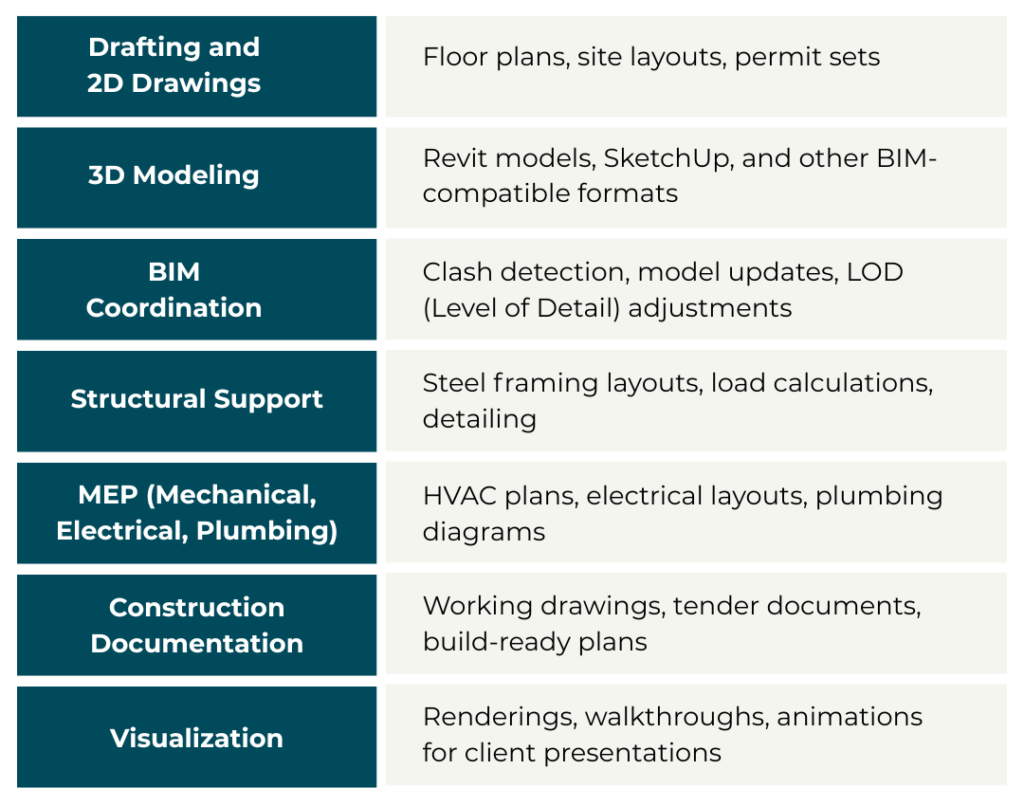
The Architecture, Engineering, and Construction (AEC) industry is under pressure. Projects are getting more complex, deadlines are tighter, and finding skilled workers is harder than ever. At the same time, technology is moving fast—tools like BIM, 3D modeling, and even artificial intelligence (AI) are quickly becoming part of everyday work.
In the middle of all this, more AEC firms are turning to outsourcing. But not just to cut costs alone. They’re doing it to work smarter, scale faster, and stay competitive in a changing market.
Here’s a closer look at why outsourcing is gaining momentum in AEC and how it’s helping firms deliver better results.
Years ago, outsourcing was mainly used to lower expenses. Firms would hand off drafting or rendering work to offshore teams and call it a day. But that’s changed.
Today, outsourcing is a way to solve bigger problems like hiring gaps, heavy workloads, or tech skills your team doesn’t have. It helps firms stay on top of projects without burning out their in-house teams. And when done right, it improves the quality of the work, too.
In a recent Deloitte report, 70% of businesses said outsourcing helps them focus on what they do best. For AEC firms, that might mean letting internal teams handle design strategy and client relationships, while support tasks like drafting or coordination are handled externally.
Why Outsourcing Makes Sense Right Now
Outsourcing isn’t new, but the reasons to do it today are stronger than ever. Several forces are converging to make outsourcing more appealing and even essential for AEC firms.
1. It’s Hard to Find Good People
AEC firms around the world are struggling to hire skilled workers. In places like the U.S., there just aren’t enough qualified architects, engineers, and construction pros to go around. And when firms do find talent, it’s hard to keep them.
Outsourcing opens the door to experienced professionals in countries like the Philippines or India—people trained in tools like Revit and AutoCAD who are used to working with international standards.
2. Tech Keeps Moving
The tools used in AEC have changed a lot over the past decade. BIM, 3D scanning, AI, cloud collaboration—these things aren’t just nice-to-have anymore. They’re must-haves. But not every firm has the time or budget to stay fully up-to-date.
Outsourcing to specialized teams means you can work with experts who are already fluent in these tools, without needing to retrain your own team or invest in extra software right away.
3. Faster Turnarounds, More Flexibility
With clients expecting quicker timelines and fewer errors, AEC firms need to move fast and stay flexible. Outsourcing helps by extending your team’s capacity and sometimes even offering overnight progress, thanks to time zone differences.
AEC Services That Are Being Outsourced Today
The scope of AEC outsourcing is expanding. It’s no longer limited to drafting or rendering. Here’s a list of common services firms are handing off to outsourced teams:

Each of these services not only reduces the in-house load but also speeds up project delivery and improves accuracy. The goal isn’t to replace your core team, but to give them room to focus on bigger things while trusted partners handle the rest.
Where AI Fits In: How Artificial Intelligence Is Accelerating AEC Outsourcing
Outsourcing providers have recognized these communication concerns and have developed strategies to overcome theArtificial intelligence is starting to make waves in AEC. Again, not replacing people, but it’s making their jobs easier—and better. When paired with outsourcing, it becomes a powerful combo.
Here’s how AI is helping outsourced teams work more efficiently:
1. Faster Design Choices
AI-powered tools can generate multiple design iterations based on constraints like cost, material use, and environmental factors. This helps outsourced designers test options quickly and give you more to work with early on.
2. Fewer Mistakes
AI can scan plans for missing details or inconsistencies—like a duct that runs through a beam—and flag them before they become problems on site.
3. Better Forecasting
Some AI platforms can forecast risks, delays or budget overruns based on past data. If your outsourcing partner is using these tools, you’ll get alerts early and can adjust plans before things go off track.
Common Concerns and the Truth Behind Them
Even with all the benefits, some firms still hesitate. Here are a few common doubts and why they may not hold up.
- “Outsourcing means lower quality.”
Not true! Quality depends on the partner you choose. Many outsourced teams follow global standards, have licensed professionals, and deliver solid work. A good partner will feel like an extension of your team. Countries like the Philippines and India are home to thousands of licensed architects and engineers with international project experience.
- “Only big firms can afford it.”
Actually, smaller firms often gain the most. Outsourcing levels the playing field—it lets them take on bigger projects without hiring full-time staff or investing in expensive tools right away.
- “My data won’t be safe.”
Security matters, and most established outsourcing providers know that. They use secure cloud tools, sign NDAs, and follow best practices for file sharing and access.
How to Pick the Right Outsourcing Partner
Not all outsourcing teams are created equal. Choosing the right partner makes all the difference. Here’s what to look for:
- Experience with Your Tools: Make sure they know the software your team uses—whether that’s Revit, AutoCAD, Navisworks, or something else.
- Strong Communication: Regular updates, clear processes, and quick replies are a must.
- Reliable Workflows: Ask how they manage projects. Do they use platforms like Trello, Asana, or BIM 360?
- Scalable Team: Can they add more people if your project suddenly grows?
- Cultural Fit: It helps if they understand your working style and can adapt to how your firm operates.
What’s Next for AEC Outsourcing?
Looking ahead, outsourcing in AEC will only grow. Here’s what we’re seeing:
- More AI Use: Expect outsourcing partners to bring AI tools into your workflow—from automated redlining to project tracking.
- Green Building Support: As sustainability rules tighten, outsourced teams will offer more expertise in LEED, WELL, and other green standards.
- Digital Twins and Ongoing Support: Some partners will help maintain and update models after construction, keeping your digital twins current.
- Cloud-First Workflows: Platforms like Autodesk Construction Cloud will make it easier than ever to work together wherever your teams are.

Final Thoughts: Why It’s Worth a Closer Look
If you’ve been on the fence about AEC outsourcing, now’s the time to explore it. The industry is changing fast, and outsourcing can help you stay ahead without overloading your team or stretching your budget.
With the right partner, outsourcing becomes a growth enabler. It amplifies your team’s strengths, gives you flexibility, and keeps you ahead in a fiercely competitive market. In a time when the only certainty is change, having a global team behind you is both smart and strategic.
Whether you’re tackling a backlog, taking on a new type of project, or just looking to free up your team’s time, outsourcing could be the step that gets you there faster.
Curious if AEC outsourcing is the right fit for your firm? Let’s start a conversation.
The right support could be just a few clicks away.

